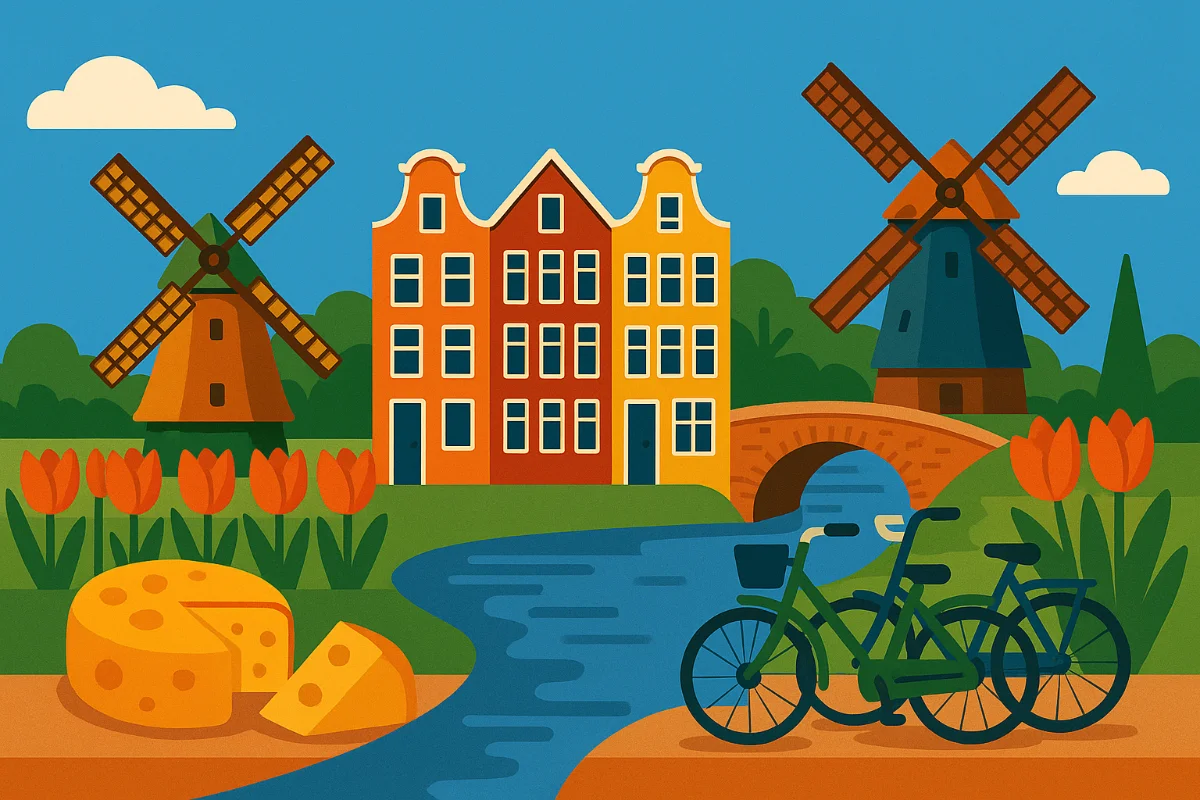Subjunctive Mood (Aanvoegende Wijs) (B2)
The Dutch subjunctive mood (aanvoegende wijs) is a verb form used to express wishes, possibilities, exhortations, or hypothetical situations, often with a degree of uncertainty or non-reality. While historically more common, its use in modern Dutch is very limited, primarily confined to fixed expressions and highly formal or archaic contexts.
Key Characteristics:
- Form: The subjunctive form often resembles the infinitive form of the verb, sometimes with an
-eending where the present tense might not have one (especially for third-person singular). - Present Subjunctive
zijn:ik zij,jij zij,hij/zij/het zij,wij zijn,jullie zijn,zij zijn(Note the distinctivezijfor 3rd person singular). - Present Subjunctive
hebben:ik hebbe,jij hebbe,hij/zij/het hebbe,wij hebben,jullie hebben,zij hebben(Note-eending). - Present Subjunctive other verbs: Often ends in
-e, e.g.,kome,leve,moge. - Usage Contexts: Almost exclusively found in:
- Fixed Expressions: These are the most common encounters for learners.
- Highly Formal Language: Legal documents, official proclamations, religious texts, older literature.
- Expressing Wishes/Hopes (Formal/Archaic):
- Exhortations/Commands (Formal/Archaic):
Common Fixed Expressions (Most Important for B2 Recognition):
Leve de koning!(Long live the king!) -leveis subjunctive ofleven.Moge hij in vrede rusten.(May he rest in peace.) -mogeis subjunctive ofmogen.God zij dank.(Thank God. / Thanks be to God.) -zijis subjunctive ofzijn.Het zij zo.(So be it. / Let it be.) -zijis subjunctive ofzijn.Tenzij(Unless) - Historically derived from subjunctive (het en zij= if it not be).(Het) spijt me zeer, ware het niet dat...(I am very sorry, were it not that...) -wareis past subjunctive ofzijn.Koste wat het kost.(Whatever the cost. / Cost what it may.) -kosteis subjunctive ofkosten.Zo waarlijk helpe mij God Almachtig.(So help me God Almighty - part of official oaths) -helpeis subjunctive ofhelpen.- In some proverbs or set phrases.
Why Learn About It at B2?
- Recognition: While active use is rare, B2 learners might encounter these fixed expressions or formal texts.
- Understanding Formal Register: Recognizing it helps understand the tone of very formal or older Dutch.
- Linguistic Awareness: Understanding that Dutch has a subjunctive, even if residual, provides deeper grammatical insight.
Key Takeaway for B2:
Do not focus on actively producing subjunctive forms outside of the common fixed expressions. The main goal is recognition of the mood in set phrases and understanding its association with formality, wishes, or hypothetical/non-real situations in those specific contexts. Modern Dutch overwhelmingly uses other structures (like modal verbs kunnen, mogen, zullen, zouden or indicative moods) to express these meanings.

